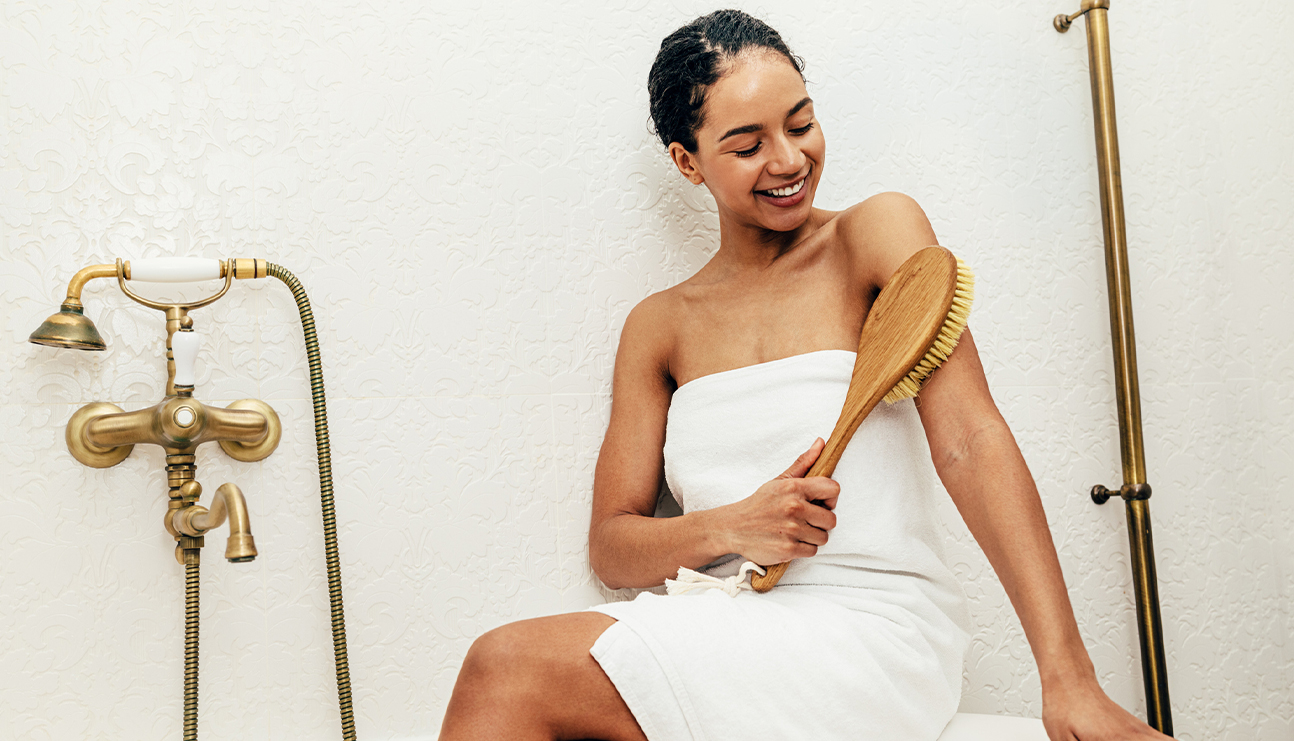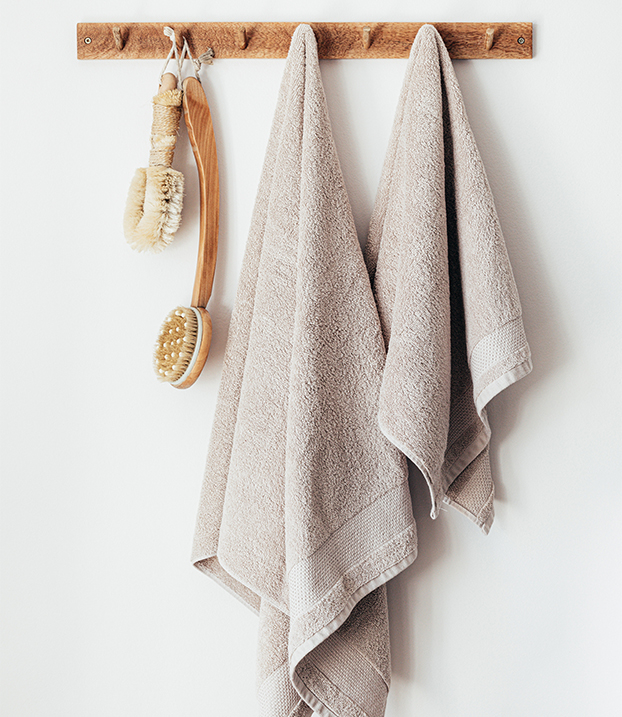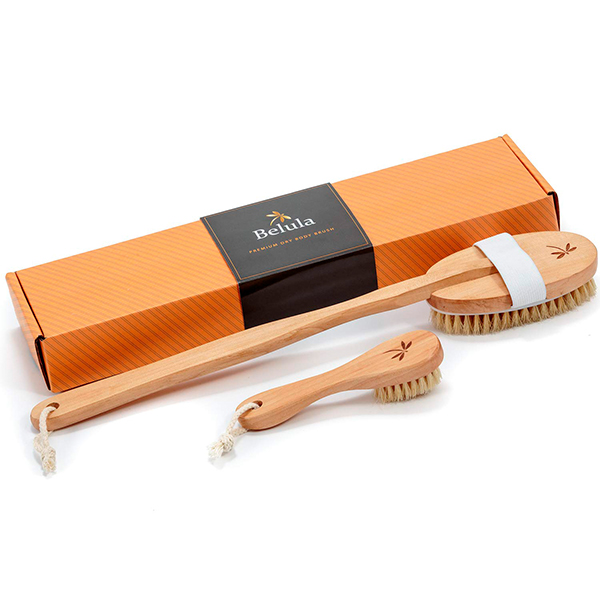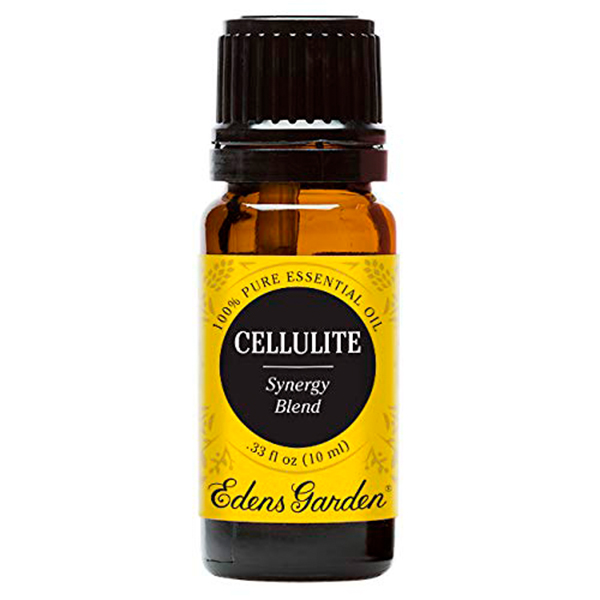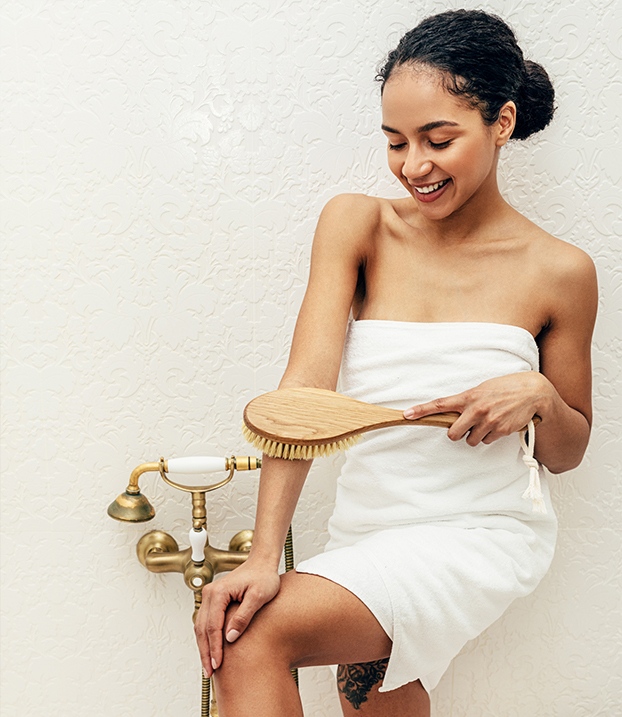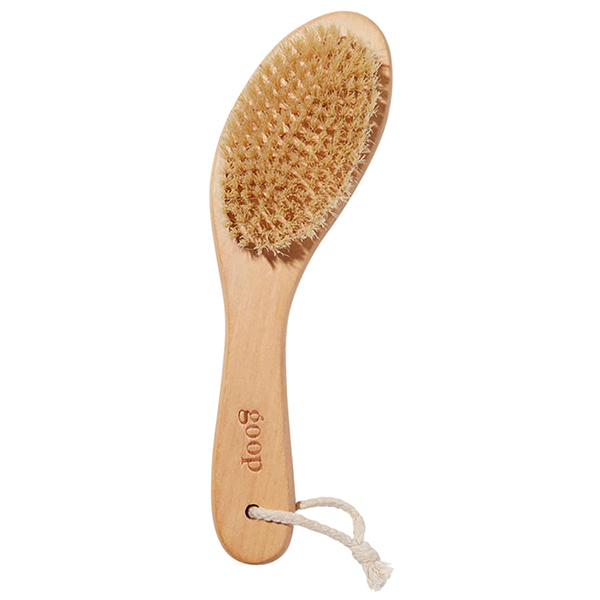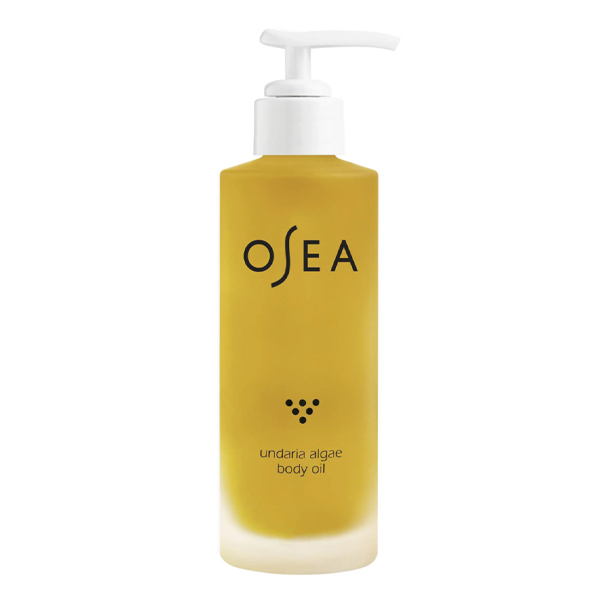Your Questions About Dry Brushing, Answered
Along with gua sha, dry brushing is one of our favorite self-care rituals. It’s easy to incorporate into even the busiest schedules and it has a number of benefits for both your skin and your overall well-being—and dry brushing has centuries of use in Ayurvedic medicine to back it up. If you haven’t picked up the habit yet, you might have some questions about dry brushing. What exactly does it do? What kind of brush do you need? Does dry brushing actually work?! We’ve got all the answers you need below.
How many times a week should you dry brush your skin?
There’s not really a good consensus on this—some skincare experts say to do it once or twice a week, while others advocate for daily dry brushing. Here’s what we think: as long as you’re not scrubbing the ever-loving heck out of your skin (and you shouldn’t be!), there’s no reason not to dry brush every day. (Of course, this assumes that you don’t have sensitive skin or a condition like eczema or psoriasis.) It’s a great way to get your lymph moving and your blood pumping in the morning.
What are the benefits of dry brushing?
So! Many! Benefits! The first is obvious: dry brushing is a great way to clean and exfoliate the skin. A lot of write ups focus on the exfoliation part—and yes, it’s fantastic for sloughing off dead skin cells—but it’s also excellent for getting dirt, oil, and gunk off of your skin. By boosting circulation, dry brushing makes cellulite look less noticeable, and of course, dry brushing supports lymphatic drainage, which means it allows your body to purge toxins more efficiently.
Does dry brushing actually work?
Yes, dry brushing works! You don’t have to be into homeopathy and natural medicine to see how it would be beneficial, either. Of course brushing the skin exfoliates it and boosts circulation, and of course this is fantastic for your skin and helps you feel energized after doing it.
Do you dry brush up or down?
Both! You always dry brush towards your heart and the lymph nodes under your arms and near the groin, which means for most of your body, you’ll brush with long upward strokes, but when you reach the level of your heart, you’ll brush downward.
Does dry brushing help lose weight?
Some claim that by draining the lymph, dry brushing can support weight loss, but the evidence for this is anecdotal and theoretical, not scientific. That said, dry brushing does reduce the appearance of cellulite by boosting circulation and plumping the skin.
Do you have to shower after dry brushing?
You don’t have to shower after dry brushing, but it’s recommended—you don’t want to loosen all those dead skin cells and gunk from your skin and then go on with your day! Wash it off and then seal in moisture and keep your skin smooth by applying your favorite body oil or lotion. Dry brushing has the added benefit of allowing your skin products to penetrate deeper, which makes them more effective.
What is the best brush for dry brushing?
You can’t go wrong with the goop G. Tox Ultimate Dry Brush, which is softer than many and a nice size that falls between the handheld variety and the ones that have a large handle for extra reach. Of course, some people prefer a longer handle, while others like a handheld brush for more control. In other words, it’s really up to you and your personal preferences.
Does dry brushing help with anxiety?
Dry brushing is a relaxing, meditative practice, so for a lot of people, it does help with anxiety by giving you some time to center and ground yourself. In fact, in occupational therapy, brushing the body with a therapressure brush is a way to calm the nerves, improve focus, and promote self-regulation.
How do you clean a dry brush?
You can use a gentle shampoo—like baby shampoo—or Castile soap to lather up your dry brush once a week and remove oil, dead skin cells, and dirt. For a deeper clean, you can let the bristles soak in a shallow bowl of warm water with a few drops of tea tree oil once a month. Whenever you clean your brush, place it bristle-side down on an absorbent towel until it dries completely.
What oil do you use for dry brushing?
This is a common mistake—you actually shouldn’t use oil for dry brushing! You use oil after dry brushing. A dry brushing routine starts with the brushing, then a shower, followed by applying an oil or moisturizer. All you need is a simple jojoba oil (add some drops of essential oil to liven it up!), but if you’re in the mood to treat yourself, try Helias CBD Hemp Body Oil, Osea Undaria Algae Body Oil, or Denise’s fave, Nécessaire The Body Lotion.



